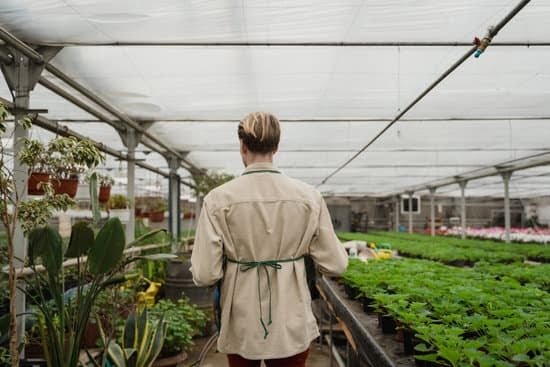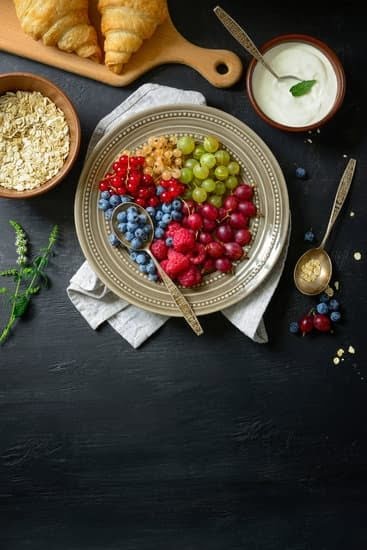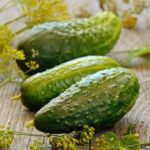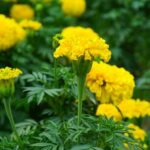Introduction
Garden pots and planters are an essential part of every garden, as they create additional living space for plants and increase the visual interest of the area. They come in a variety of shapes, sizes and materials, allowing you to get creative with your designs. For example, choose ceramic, terracotta or stone containers for a classic look, or go for modern metallic planters. You could decorate them with mosaics or repurpose materials such as wood and recycle containers. Garden pots and planters can also be used in indoor spaces, like greenhouses and conservatories. The best way to use them is by grouping plants together, creating a feature that expresses your sense of style. Besides aesthetic value, garden pots and planters offer many practical benefits. From preventing soil erosion in outdoor gardens to protecting floors from excess water indoors, they are an affordable way to upgrade any outdoor environment or bring some character into your home – no matter the size of your garden!
Types of Garden Pots and Planters
Clay: Clay pots are a classic choice when it comes to gardening pots and planters. They come in a variety of shapes, sizes and colors. Clay is relatively inexpensive and because it’s natural material, it adds texture and interest to any garden setting. However, clay pots can be easily damaged and are prone to cracking, so they will need to be replaced frequently if used outdoors during cold weather.
Plastic: Plastic pots are often the most popular choice among gardeners due to their affordability and durability. These lightweight containers come in a range of colors, designs, and sizes; some with self-watering reservoirs built in. One drawback of plastic is that they may become brittle over time, depending on exposure to the elements.
Metal: Metal pots have been around for quite some time and offer an industrial look for your garden. Metals like brass or copper will develop a patina over time which gives them character. Unfortunately, metal can become very hot during the summer months if placed in direct sunlight and may burn your plants roots or cause them to dry out quickly depending on its position in the garden.
Ceramic: Ceramic is one of the more expensive types of plant containers but it can really make an impact visually with its many shapes, styles and color options available. Plus these sturdy planters won’t crack or break like clay vessels would making them more durable than other types of containers available. However they are heavier than plastic pots so they require extra strength when lifting or moving them around your outdoor space.
Selecting the Right Size
The size of the pot or planter you select for a given garden location depends upon the type and size of the plant. Different plants require different amounts of soil and can only thrive if they have enough room to grow their roots. If a plant is placed in an overcrowded environment, it may suffer from inadequate nutrient supply, lack of oxygen, or may become susceptible to disease.
When considering the size of a pot or planter, consider both the depth and width that will be necessary to suit your chosen plant variety. Generally, small and slow-growing plants require shallow pots with a diameter between 6-12 inches; medium-sized plants require pots between 12-16 inches; while larger plants tend to need pots with a diameter in excess of 18 inches. Make sure to also account for drainage holes so that excess water can safely escape from the pot.
In addition to selecting the correct sized container for each individual plant’s needs, it is important that you also consider how large your selected plant is likely to become when mature and how much space it will take up once full grown. This will help determine how far apart each container should be spaced within your garden design. When setting out smaller potted plants (for example bedding plants) make sure to leave sufficient space between them so that they can spread naturally without impeding neighbour’s growth. Also remember that these spaces must allow adequate air circulation – this reduces chances of fungal diseases developing which often afflict those growing in crowded environments.
Plant Varieties
Gardening with pots and planters offers a unique way of introducing plants into the garden. Using plant varieties that are suited for this type of gardening is key for success. Some of the best plants for container gardens include cherry tomatoes, basil, chives, peppers, oregano and thyme. Each of these plants have their own set of benefits – from providing flavor in cooking to adding decoration to garden beds.
When considering companion plants, think about pairing vegetables with flowers such as petunias or marigolds that add texture and color to your container garden. Additionally, many herbs go well together so don’t be afraid to mix and match! When designing a container garden remember to use smaller pots or planter boxes to promote healthy growth and watch out for overcrowding by mixing larger and smaller plant varieties among one another. Also remember that it’s important to seasonally rotate containers as they will need more frequent watering than planted beds in the ground. Finally, consider placing container gardens near outdoor furniture or patio areas where you can enjoy their aesthetic beauty up close!
Styling the Garden
When it comes to styling your garden with pots and planters, one of the best ways to make your garden into a truly unique and special space is by adding personal touches. Use pieces that have meaning to you – such as an old pot passed down in the family. Or find something new but unusual – perhaps a piece of art or sculpture, a fancy ceramic pot, an antique terracotta pot, or colorful glass beads – to display in the garden. You could even use unexpected items like an old bicycle wheel or a vintage suitcase to create a striking planter for added charm.
You can also choose to utilize various sizes and shapes of pots and planters when creating your outdoor space. If you’re looking for options with less maintenance try lightweight plastic pots as they are easier to move around if you are interested in rearranging the look of your garden from time to time. Additionally, plastic pots allow for more freedom in terms of design choices than ceramic or stone ones can provide since their range of shapes and sizes is much more limited.
To add a splash of color, consider painting some planters in bold shades, from zesty yellow to vibrant pinks, blues and oranges that will bring cheerfulness and cheer up any dull corner in the yard. The great thing about gardening with pots is that most plants will thrive out in them all year round so this ensures that your outdoor area is always looking vibrant. Herb gardens are another great option for those who want something easy manage yet aromatic at the same time!
Caring for Pots and Planters
Cleaning: The first step in proper care for garden pots and planters is cleaning. This can be accomplished with a mixture of warm water, dish soap, and bleach (for tougher stains) or a specialized cleaner. Ensure to rinse thoroughly after cleaning, as some soaps may leave residue when left on the surface.
Repainting/Recoating: As time goes by, the finish of your pots or planters may begin to show signs of damage such as scratches and fading color. To keep them looking fresh you can repaint or recoat them using appropriate spray paints and sealers for the material type of your pot or planter.
Sealing Your Planters: Depending on the materials used, you will also want to consider sealing your planters with a waterproof coating every few years. This will help reduce staining and discoloring caused by excessive moisture and protect their shine overall. Sealing also greatly increases their durability and ability to withstand extreme temperatures if they’re placed in direct sunlight.
Waterproofing Drains: If your pot or planter has drainage holes at the bottom, it’s important to waterproof these for both hygiene reasons as well as prevention of plant diseases due to excess moisture build-up at the base of the pot or planter. You can easily do this using sealant specifically designed for outdoor use like silicone caulk or polyurethane foam sealant.
Conclusion
Garden pots and planters are a great way to add color, texture, and visual interest to your outdoor living space or balcony. When choosing garden pots and planters, it is important to consider the size, shape, texture and color scheme of your outdoor area. Additionally, picking an appropriate material for the weather conditions associated with your area will help ensure years of lush plants. keep in mind that the deeper the pot or planter is, the better as this allows ample room for healthy root growth as well as allowing adequate drainage. To further improve drainage quality and help maintain soil moisture, adding rocks at the bottom of each container can be beneficial before adding soil. Lastly, don’t forget to frequently water plants; overwatering can interfere with nutrient absorption while underwatering can cause them to dry out so always check how much moisture each plant requires when setting up a watering schedule. With these tips in mind you’ll find the best garden pots and planters for your outdoor space in no time! For more information on additional resources on gardening pots and planters please see the link below: [INSERT LINK]

Welcome to my gardening blog! I am passionate about plants and enjoy sharing my knowledge and experiences with others. In this blog, I will write about everything related to gardening, from tips on how to get started to updates on my own garden projects.





